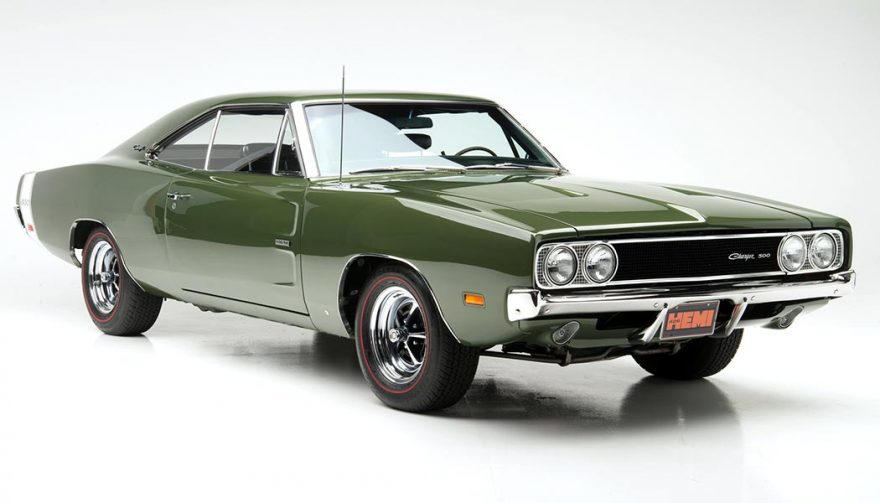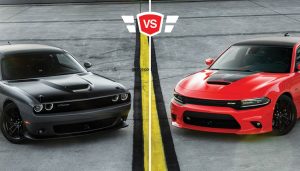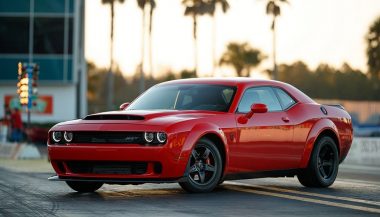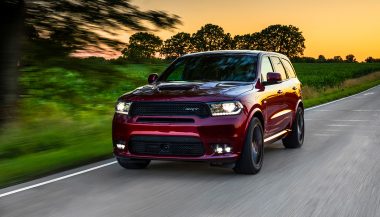
No Flat Heads: A Dodge Charger 500 with a HEMI engine
Hemi Engines: The Monster Motors in Muscle Cars
If you think back to the late ’60s and early 70s some of the baddest boys on the street were huge Hemi engine cars capable of blowing the competition off the road or just satisfying the ego of the owner. Several brands had their own version of Hemi engines, but Chrysler was the first to engineer the design and copyright the name.
While some enthusiasts don’t know what makes these engines different, they have expectations that if the name Hemi is attached to a car then that car will scream off the line in a cloud of smoke, blast through a quarter mile, and make a hell of a lot of noise in the process.
So what is it about a Hemi that makes it so special? The short answer is the Hemi design creates a far more efficient combustion chamber than conventional “flat head” engines resulting in the retention of considerably more heat and energy that drives the piston with more force, making the wheels on the bus go round and round…faster.
What Makes a Hemi a Hemi?
The Hemi has a hemispherical cap on the cylinders and a bulge at the top of the pistons creating a better space to volume ratio when the spark ignites the gas. However, to get that better combustion chamber there are costs, mostly in terms of weight and engine displacement. In order for the piston to penetrate the domed cylinder sufficiently to get the desired combustion chamber, the stroke or rods have to be longer. Longer rods mean more weight and it also means that the cylinders cannot be mounted vertically but at an angle making the engine significantly wider than standard flat heads.
But hey, who cares that they have more parts than a standard engine and that the engine compartment is about as jammed packed as a crate of cabbage making maintenance real sporty, these babies could fly!
Speaking of flying, here’s a bit of Hemi trivia: the first “Hemi” engine developed by Chrysler was used to power the WW II P-47 fighter plane with a V16 engine that generated 2500 hp. The war ended before the engine went into production so it was reconfigured to power the Army’s Patton tank. Talk about lineage!
The Engine Nicknamed “The Elephant”
The monster 426 cu. in Hemi was originally designed as a race engine for the Plymouth Belvedere in 1964. However NASCAR (which was arguably as popular then as it is now) disqualified the engine because it was not readily available to the public, a requirement for Top Fuel and Funny Car classes. The solution – plop some of these monsters in the 1966 models of the Dodge Dart, Dodge Coronet and the Plymouth Fury – problem solved.
Meanwhile the competition for street legal muscle cars was heating up and the brands under the Chrysler umbrella each wanted a shot at using Chrysler’s edge in Hemi technology to create “the next big thing” in road rockets. The result was a series of cars, some that were commercially successful, and became legendary or near legendary during the Golden Age of Muscle Cars.
1969 Dodge Charger 500 HEMI
A rare animal (only 580 were built and only 67 had the 426 and the 4 speed tranny) this beast had both good looks and a big punch under the hood. It was a serious street machine when street racing was the bane of police departments in both urban and rural communities. Oh…and it got 7 mpg.
- Engine: 426-cid OHV V-8
- Horsepower: 490 hp (advertised 425 hp)
- Transmission: 4-sp manual/3-sp auto
- 0-60 mph: 4.7 sec.
- 1/4 Mile: 13.80 sec. @ 105 mph
- Number Built: 580
- MSRP: $4,508
1970 Plymouth Road Runner Superbird HEMI
Only in production for a year, this souped-up version of the Road Runner was the first to be seriously designed to improve aerodynamics using wind tunnels and computer analysis. The distinctive sleek nose cone front end and optimally elevated spoiler made it a standout next to the competition. Unfortunately standing out was a bad thing with the 1970 buyers who liked the looks of the older Road Runners better. Slow sales, increasing emission control regulations and a big hike in insurance costs for performance cars left the Superbird languishing in the dealers’ lots. However, if you had one today it would be worth over $100,000.
- Engine: 426-cid OHV V-8
- Horsepower: 425 hp
- Transmission: 4-sp manual/3-sp auto
- 0-60 mph: 4.8 sec.
- 1/4 Mile: 13.49 sec. @ 106 mph
- Number Built: 135 (58 4-sp/77 auto)
- MSRP: $4,925
1970 – 71 Plymouth HEMI Barracuda
The sport model Barracudas of previous years were always looked down on because they were built on the Valiant platform, a modest economy model that Plymouth souped-up with a bigger engine and design changes to make them look sexy. In 1970 however, a brand new platform was introduced and the performance trim, the ‘Cuda, packed the 426 with 8Bbl, reinforced chassis and upgraded suspension. The ‘Cuda came as a coupe or convertible and quickly earned a reputation as a real player among muscle cars.
As impressive as its performance was, the ‘Cuda may be best remembered for its eclectic choice of exterior colors including Lime Light, Bahama Yellow, Tor Red, Lemon Twist, Curious Yellow, Vitamin C, In-Violet and Sassy Grass. There was no mistaking this car for a Valiant.
If you are interested in getting one of these beauties for yourself, first you’ll have to find one and then you may have to fork over $3.5 million like the ’71 convertible that sold in 2014.
- Engine: 426-cid OHV V-8
- Horsepower: 375 hp
- Transmission: 4-sp manual
- 0-60 MPH: 5.8 sec.
- 1/4 Mile: 14.09 sec. @ 102.85 mph
- Number Built: 858-859 for 1969
- MSRP: $4,925
These monsters were like the dinosaurs just before the meteor strike. They dominated their marketplace until the oil crisis, federal emissions and safety regulations, skyrocketing insurance premiums punched a metaphorical hole in the ground as big a meteor strike ending the muscle car and launching a decade of mediocrity.





